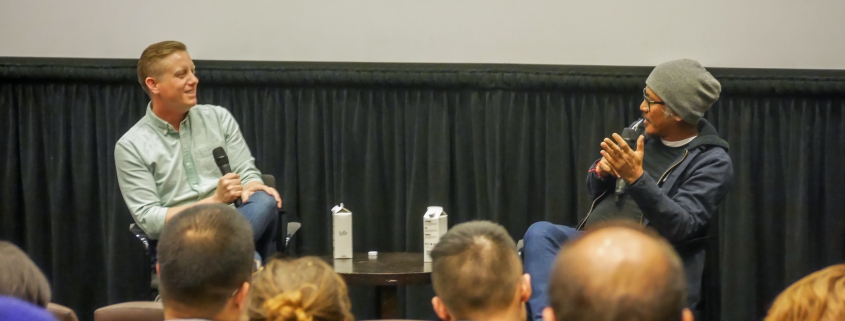Filmmaker Lav Diaz discusses organic documentation

Acclaimed Filipino filmmaker Lav Diaz followed a screening of his documentary “Storm Children, Book One” with a Q&A at the Albert and Dana Broccoli Theatre Monday night. The two-and-a-half-hour long film follows the daily lives of a group of children in Tacloban City months after Typhoon Yolanda, the largest and deadliest typhoon in the Philippines’ history.
The screening, which was moderated by Alex Ago, director of programing and special projects at the School of Cinematic Arts, was a collaboration between SCA, the American Cinematheque and the East Asian Studies Center. Grace Ryu, the associate director of the East Asian Studies Center, was familiar with Diaz’s work through streaming his other films and thought the screening was the perfect opportunity to expand the center’s programming.
“We have focused primarily on East Asia, which is China, Japan, Korea,” Ryu said. “But we do hope to expand to Southeast Asia and South Asia so this was a wonderful opportunity to bring a Southeast Asian filmmaker here to campus.”
Diaz did not arrive in the Philippines with the intention of focusing his project on children, but the protagonists of his story became evident when he saw young people frequently ignored by post-disaster mainstream media coverage.
“The first time that I went there, I noticed the kids,” Diaz said. “It’s really chaotic and at the same time it’s real, when that storm happened … So many people came, even Anderson Cooper was there, so it’s the whole world that’s coming. I was behind the scenes shooting them, and then I noticed the kids.”

The majority of the footage showed children sifting through rubble in hopes of finding something of value or children playing in the flooded streets. This caught Diaz’s attention, as the children had returned to their normal activities while the adults were still immobilized by shock and grief.
“They just forgot about the storm, just forgot about the devastation,” Diaz said. “I was struck by their innocence and their beauty, so I started focusing on them.”
Diaz told the crowd about how he met the children at the focal point of the project and how he gained their permission to film them.
“I just stayed there. I lived there for a month, and then they became my friends, they didn’t mind it at all. I said, ‘I’m going to shoot you guys and follow your lives.’”
It is the juxtaposition of the horrific tragedy the community is struggling to heal from and the way the children maintain their playful attitudes that makes this an acclaimed documentary. In one shot, a group of young girls sings Frozen’s “Let It Go” as the camera focuses on a broken road filled with remnants of destroyed homes. The disaster zone is turned into a waterpark as children use broken roofs to raft down flooded streets and turn abandoned ships into diving boards.
Diaz is a stylistic filmmaker, known for his frequent use of black and white and his pioneering role in the slow cinema movement, with many of his films having a run time of around nine hours. While the runtime of this documentary is only a fraction of his typical work, he utilizes the same long, drawn-out shots he is famous for.
“We start very observational, but then as things progress, we start to actually see a little bit more of the filmmaker, because they’re speaking to [Diaz] directly,” Ago said.
The documentary subverts many expectations American audiences hold when walking into a theater. There is little dialogue and no underscoring; the film structure is simply a procession of tableaux, where the camera is at a fixed angle and rarely moves. One of the most touching moments is when two boys unearth a small ball from a pile of wreckage which audiences watch them dig through for a half hour.
“There’s this endlessly fascinating sequence in the film where the boys are unearthing things that clearly had been buried after the ravages of the storm,” Ago said. “And, quite frankly, it was almost hypnotic, just sort of following what they were doing there, especially when they actually start extracting things.”
Despite the lack of narrative elements viewers expect, the documentary’s emotional resonance comes through the ceaseless daily activities that suck the audience in. Diaz said he had no expectation or narrative in mind when he arrived in Tacloban but rather allowed the real lives of the people recovering to tell the story.
“That’s the beauty of organic methodology where you don’t know anything, you’re just discovering things every day, you’re discovering things as you go along,” Diaz said. “It’s a very fluid thing.”

